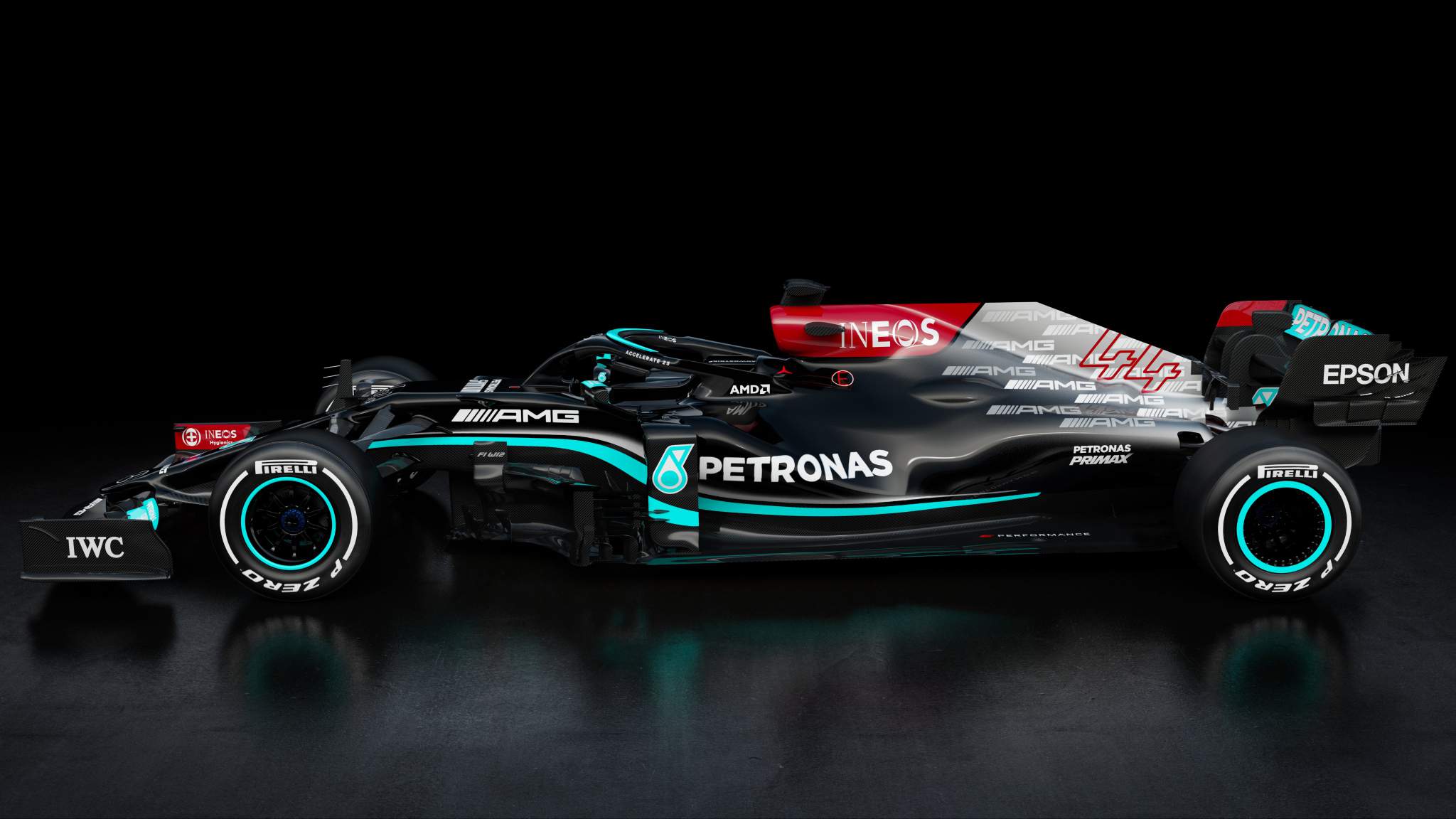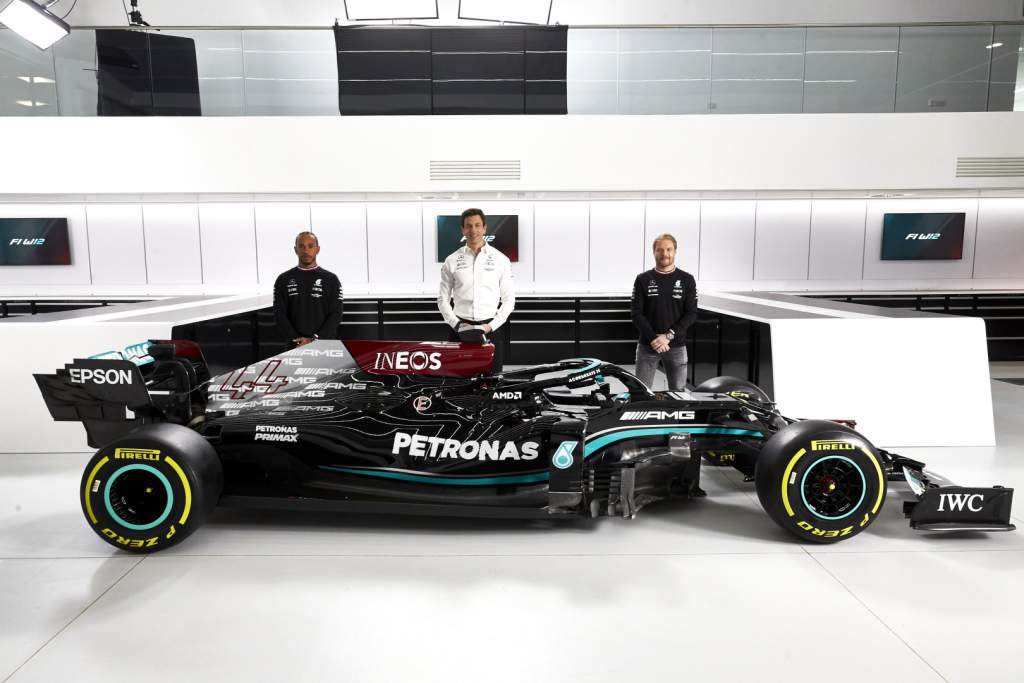Up Next

Mercedes will not reveal how it has spent its development tokens for its 2021 Formula 1 car, saying that it will “become clear in good time”.
Since establishing itself as F1’s leading force at the beginning of F1’s V6 turbo-hybrid era in 2014, Mercedes has evolved into arguably the most innovative team in F1 on the chassis side as well.
Last year’s W11 featured an adventurous rear suspension change as well as the invention of the dual-axis steering system, which has been banned for 2021.
Its new W12 has less room for innovation because F1 has mandated teams carry over mechanical components from last year’s cars as part of cost-saving measures put in place in response to the coronavirus pandemic.
However, teams are allowed to spend two tokens – with bigger components costing two tokens and smaller components costing one – as well as having complete aerodynamic freedom.
Mercedes has admitted to pursuing non-token upgrades such as suspension and cooling system improvements, in addition to the usual aero gains, but it is not disclosing its token spend for now.
“The only thing we can say with certainty at this stage is that everybody’s cars will have significant areas that are the same as their 2020 car but those areas will vary from car to car, depending on how they chose to spend their tokens,” said technical director James Allison.
“We have spent our tokens, but we won’t reveal how we used them just yet. That’ll become clear in good time.”
It made a point of concealing the design’s floor area in its launch video, with Allison openly admitting that Mercedes did not want rivals to see how it had responded to the 2021 rule changes yet. This piece of secrecy does not necessarily relate to the token spend as changes in the areas covered by the revised rules would not require token use.
“The bit we’re not showing you is down along the edge of the floor,” he said.
“That area is the area that was most affected by the new regulations, where they tried to pull performance away from the car by changing the floor regs.
“And down there, there’s a bunch of aerodynamic detail that we are not quite ready to release to the world – not because it’s not there, but because we don’t want our competitors to see it, we don’t want them trying to put similar things into their windtunnels. It just buys us a couple of weeks extra.
“We all look very closely at what our competitors do, so we know our competitors will be looking. We don’t have to show it yet, so we’re not.”

Though there is widespread carry-over from last year, teams have also had to face the challenge of adapting to the new aerodynamic rules towards and at the back of the car.
The rear of the floor has been trimmed inwards, slots have been removed from the front of the floor, diffuser fences have been trimmed and rear brake ducts simplified.
Allison described that quartet of alterations as “by far and away the biggest area of technical development” on the W12, calling it “a profound set of changes that affect the performance of the floor”.
“Once the rules had been established, our task was to figure out how to recover the losses brought by the changes,” he said.

“The rest of the aerodynamic work has been the normal fare of seeking out aerodynamic opportunity across every square centimetre of the car with particular attention to finding places where we can invest extra weight into fancier aerodynamic geometry.
“2021 permits the cars to be 6kg heavier, and we have an additional few kilos to spend as a result of DAS being banned.
“Beyond this, the carryover rules have confined us to figuring out how we can make some parts live longer, so we don’t have to replace or buy them so often.”
Mercedes is not the first time to keep its cards close to its chest this launch season.
McLaren disguised its new bargeboard arrangement at the launch of the MCL35M.
Red Bull has concealed its RB16B despite running it at a shakedown last week, while its sister team AlphaTauri revealed its token spend was on a narrower nose – but hid this at the launch.




